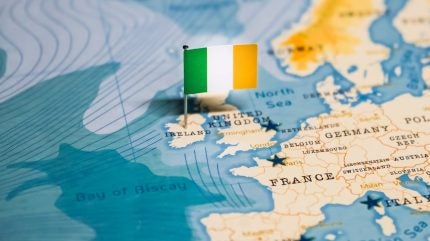
Ireland’s food, drink, and horticulture export sales reached a record €17bn ($17.5bn) in 2024, marking a 5% increase from the previous year.
According to state agency Bord Bia, the rise in revenues was primarily due to higher pricing. However, Bord Bia pointed to rising volumes in sectors including meat and seafood.
“This performance marks a milestone year for Irish food and drink exporters, despite enduring global trade challenges caused by geopolitical instability, fluctuating inflation and ongoing high trading costs,” the organisation said in a report announcing the figures.
Dairy exports, which is Ireland’s largest category of food exports, remained stable year-on-year, totalling €6.3bn.
Ireland’s 2024 milk collections dropped by 2.5% to 8.3 billion litres, marking the second consecutive decline since milk quotas ended in 2015.
Poor spring and summer weather affected grass growth during the crucial peak milk period, reducing production.
In a statement, Bord Bia CEO Jim O’Toole said that “climate change remains the most pressing challenge for the food and drink sector”.
Additional challenges include labour costs, regulatory demands, technological advancements, market disruptions, and inflation.
The dairy category experienced declines in skim milk powder and other milk products, offset by increased butter exports.
Skim milk powder exports declined to €370m, a drop of €185m from 2023, as production volumes fell.
Butter exports grew by approximately €400m, or 31%, to €1.7bn, with prices ranging from €5,430 to €7,810 per tonne, significantly higher than the 2023 average of €4,820.
Bord Bia said meat and livestock exports rose by 6% to €4.3bn, driven by higher beef, pigmeat and live trade volumes and prices.
However, sheep meat export volumes fell by 23% in 2024 to 56,000 tonnes with value down 6% to €400m, returning to 2021 levels.
Ireland’s exports of what Bord Bia called “prepared consumer foods” increased by 7% in value to €3.4bn, with volume growth from meal solutions, bakery and beverages.
Unlike in 2023, 2024 saw growth in both value and volume, driven by meal solutions (€685m), bakery (€355m), and beverages (€290m).
Seafood exports increased by 9% to €595m, driven by salmon and pelagic volumes.
Freshwater exports were valued at €100m, with pelagic fish at €145m.
Shellfish exports rose by 4% to €185m, while value-added seafood and whitefish exports declined by 6%.
Cereals and horticulture exports grew by 4% to €325m, with mushroom exports increasing by 7%. Cereal exports, however, declined by 7% to €90m.
The nation’s drink exports grew by 19% to over €2.1bn, with vodka-based RTDs and whiskey leading the growth, Bord Bia said.
Exports of vodka-based RTDs reached €235m in 2024, up from €55m in 2022.
Whiskey exports rose by 13% to over €1bn, while cream liqueur and beer exports also saw increases. Irish whiskey remained the key drink export, representing 49% of total value.

UK top customer but Ireland’s exports diversifying
In terms of destinations, the UK remained the largest market for food and drink exports from Ireland, with a 7% increase to €5.9bn.
Despite this, the share of UK exports is lower than pre-Brexit levels, as Irish exporters diversify into other markets, the agency said.
Exports to the EU rose by 4% to nearly €5.9bn, representing 35% of Irish food, drink, and horticulture exports, down from 36% in 2023.
France, Germany and Belgium made up nearly 40% of these exports, with value increases of 5%, 12%, and 12%, respectively.
Trade with international markets grew by nearly 5% to €5.2bn, driven by a 14% increase in North America.
Ireland’s exporters had a “mixed” performance in Asia, Bord Bia said, with dairy exports declining by 12% and pigmeat exports to China falling below €100m. Exports to Africa rose by 10% to €950m.


